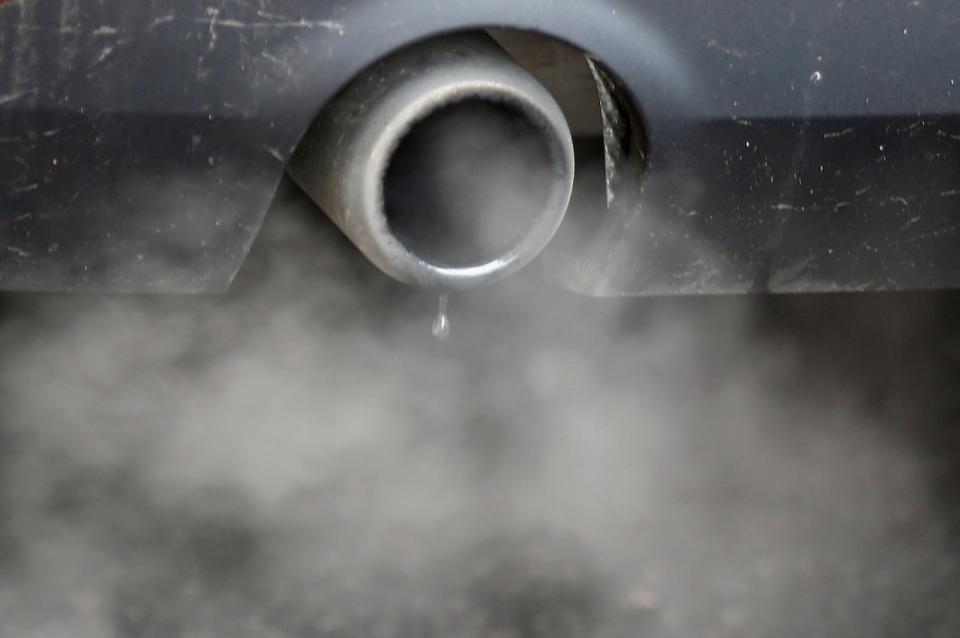These are Windsor's biggest climate pollution problems and the plans to fix them

The biggest drivers of climate pollution in Windsor are the energy used to control the climate in aging homes and the amount of fuel used for transportation, according to a new report heading to city council.
The report says both will require major investment to create meaningful change.
This is the first greenhouse gas emissions and energy usage report which breaks down where climate pollution is being created — and what council can do to reduce those emissions.
Windsor's council, which declared climate change a city emergency in 2019, has a goal of cutting city-wide emissions by 68 per cent of the 2005 totals by the end of 2030.
The report indicates Windsor is nearly halfway toward its goal, with a 30 per cent reduction in total emissions compared to 2005.
Staff are using the 2019 emissions for this recent report because the data during the pandemic years were not an accurate reflection of how Windsor generally operates.
According to the report, Windsor would need "1.9 million acres of forest or 26 million seedlings planted and grown for two years" to capture the carbon emissions produced in 2021.
That forest would be 52 times the size of Windsor.
Most of the emissions produced in Windsor, according to the report, come from fuel used to drive around the city, the industrial sector's reliance on natural gas, and the amount of energy used to heat and cool houses that are not energy efficient.
How Windsor will reduce pollution from transportation
The biggest chunk of Windsor's pollution comes from the fuel people use to get around the city.
These emissions were measured by the amount of gas sold within the city and then using standard emission factors.
This type of climate pollution increased slightly in the years leading up to the COVID-19 pandemic, which the report said is consistent with Canada-wide trends.
The increase can be traced back to people buying heavier vehicles, according to the report, which "tend to have a worse fuel economy as compared to smaller vehicles."

Emissions from vehicles burning fossil fuels are a big part of the city's emissions. (Peter Nicholls/Reuters)
When everyone was forced to stay home during the pandemic, there was a 20 per cent drop in the amount of on-road transportation emissions.
Windsor's supervisor of environmental sustainability and climate change says helping people change how they get around the city will help hit the 2030 target.
"For every person that's cycling or walking — that's zero emissions," said Karina Richters.
"The more people we can get on buses the quicker we can reduce greenhouse gas emissions."
Council approved an active transit master plan in 2019 that is working toward getting 25 per cent of every trip someone takes in Windsor to be by public transit, walking or cycling by 2041.
That would reduce on-road transportation emissions by 6.4 per cent.
According to the report, in 2021, 7.4 per cent of people used public transit or active transportation to get around Windsor.
The second big push that will help reduce climate pollution caused by on-road transportation is the shift to electric vehicles.
Windsor's old homes need to become energy efficient
Nearly a fifth of Windsor's emissions are caused by the energy used to cool or heat homes that are significantly older than the Ontario average, according to the report.
The average home in Windsor was built in 1960 and the report highlights an average home uses 20 per cent more energy per square metre than the average Ontario home.
Many houses were built at a time when energy efficiency requirements were not part of the Ontario Building Code, the report said — meaning they don't have effective insulation, which "drastically increases the amount of natural gas consumed to heat the home using a furnace."
Part of the strategy to reduce emissions is to create a city-run retrofit program, which could make its way to council for review later this year, according to city staff.

Councillor Kieran McKenzie sits on city council's environment, transportation and public safety committee. (Chris Ensing/CBC)
"The retrofitting program is one of the most important ones that will come forward," said city councillor Kieran McKenzie.
"We're going to have a program where people can look at their homes and implement different energy saving solutions in in their in their homes to sort of reduce their own greenhouse gas emissions and climate change footprint."
That program, which does not currently have a budget estimate, will look to retrofit 80 per cent of Windsor homes by 2041.
The cost to retrofit the home is expected to be covered by local improvement charges.
"It's not as if the municipality is going to be fully funding people to retrofit their homes, but we're going to create a mechanism where people will be able to do that," said McKenzie.
He said residents who retrofit their home — by installing more energy efficient windows, better insulation or ventilation systems — will also see savings on their utility bills and their home value rise.
"So there's a lot of reasons why it makes a whole lot of sense."
If the program moves forward, city staff believe it will reduce residential climate pollution by 34 per cent by 2041.
Industrial boom will increase emissions
The third sector producing the most climate pollution in Windsor is industrial emissions, responsible for 22.6 per cent of the city's total output.
There was a significant decrease in industrial emissions between 2005 and 2019, which the report suggests was caused by the 2009 recession and Ontario removing coal from the energy grid.
Windsor's manufacturing sector is entering a boom period now, with the Stellantis-LG Energy Solution electric vehicle battery plant expected to bring a new wave of manufacturing the region.
"We obviously do have some industries that are going to come in and increase our emissions," said Richters.

Karina Richters, Windsor's supervisor of environmental sustainability and climate change, answers questions during a committee meeting. (Chris Ensing/CBC )
The benefit of those industrial projects coming to Windsor, according to Richters, is the likelihood they're attached to projects meant to produce lower emissions — or to companies creating their own emission targets similar to Windsor's goal.
"There might be some short term pain but we're going to see that pay off in the long term."
McKenzie, who said the now annual report on climate pollution, is among the most important council receives.
He highlighted a portion of it outlining the cost of doing nothing and being forced to pay a carbon tax to offset emissions.
"If you look at the emissions that the City of Windsor is currently emitting across all of the services that it delivers, our carbon tax bill would be roughly on a per annum basis $250 million," he said.
That doesn't include the costs associated with powerful storms and weather systems caused by climate change which is expected to worsen if emissions are not reduced.
"So the cost of doing nothing is exorbitant, not significant, exorbitant."


